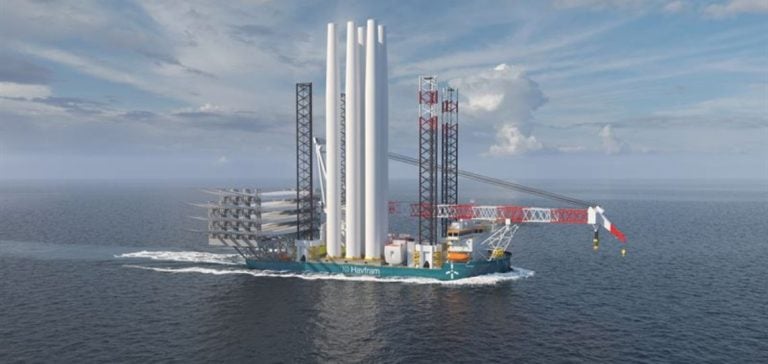Havfram signs contract with Luxcara to transport and install 16 18.5 MW turbines at the Waterkant offshore wind farm in Germany’s North Sea, with commissioning scheduled for spring 2028.
Havfram, a Norwegian company specializing in the installation of offshore wind turbines, announces the signing of an agreement with Luxcara, an independent German asset manager focused on clean energy infrastructure.
The agreement covers the transport and installation of 16 18.5 MW turbines for the Waterkant offshore wind farm, located around 90 km off the German North Sea island of Borkum.
Operations are planned for spring 2028, using one of Havfram’s turbine installation vessels currently under construction.
The wind farm will have a total capacity of around 270 MW.
This strategic partnership between Havfram and Luxcara represents a significant step forward in the development of renewable energies in Germany.
By combining Havfram’s technical expertise with Luxcara’s asset management skills, the project aims to boost the country’s offshore wind power capacity.
The deployment of high-power turbines will help increase energy production while optimizing the use of available marine resources.
Havfram’s latest-generation installation vessels will ensure efficient and safe installation of the equipment.
A major project for German offshore wind power
The Waterkant wind farm is part of Germany’s ongoing efforts to diversify its energy mix and increase the share of renewable energies.
The park’s location, close to existing electricity infrastructures, will facilitate the integration of the electricity generated into the national grid.
In addition, the project is likely to generate positive economic spin-offs for the region, particularly in terms of specialized job creation and technological development.
The 18.5 MW turbines represent a technological breakthrough for optimizing energy production.
The collaboration between Havfram and Luxcara illustrates the importance of international partnerships in the renewable energy sector.
Havfram contributes its offshore installation know-how, while Luxcara provides the financial and operational management of the project.
This synergy is essential to the success of large-scale projects such as Waterkant.
Both companies share a common vision focused on innovation and efficiency, thus contributing to national energy objectives.
Technological and logistical challenges
The installation of turbines in the North Sea presents specific challenges related to weather and sea conditions.
Havfram’s installation vessels are designed to operate in demanding environments, guaranteeing continuity of operations.
The use of high-capacity turbines also requires technical expertise to ensure their installation and maintenance.
Logistical planning plays a crucial role in keeping projects on time and on budget.
The offshore wind industry is evolving rapidly, with a trend towards increasingly powerful turbines.
The Waterkant project reflects this trend, positioning Germany as a major player in the field.
The lessons learned from this project could benefit other similar initiatives in Europe.
The development of advanced technologies contributes to strengthening the competitiveness of the European wind energy industry on the international stage.
Outlook for the European wind energy sector
The realization of the Waterkant wind farm will also depend on the regulatory framework and the support of the relevant authorities.
Authorization procedures and environmental standards must be strictly adhered to.
Cooperation between the various stakeholders, including suppliers, port authorities and local communities, is essential to the success of the project.
Environmental and economic issues are closely linked in this type of initiative.
Investing in renewable energy infrastructure like Waterkant is part of a long-term strategy to meet growing energy needs.
The transition to cleaner energy sources is a priority for many European countries.
Offshore projects offer significant potential, particularly in terms of installed capacity and production stability.
Companies like Havfram and Luxcara play a key role in achieving these objectives.
The partnership between Havfram and Luxcara for the Waterkant wind farm marks a significant milestone in the development of offshore wind power in Europe.
By overcoming technical and logistical challenges, this project could serve as a benchmark for future collaborations in the sector.
The commitment of industrial and financial players to ambitious projects bears witness to the positive dynamics of the wind energy industry.
Waterkant’s success could stimulate new initiatives and strengthen Germany’s position in the global energy market.






















